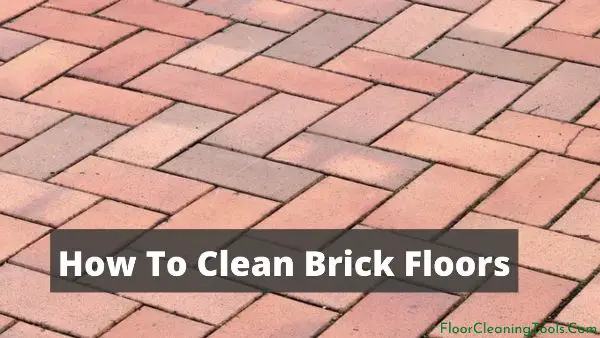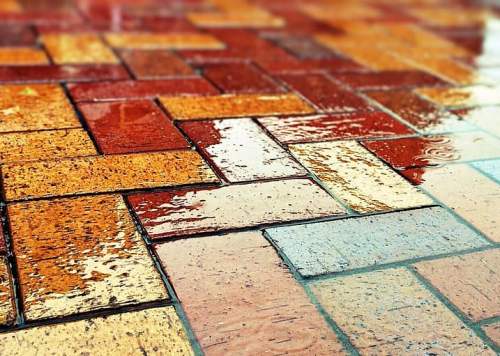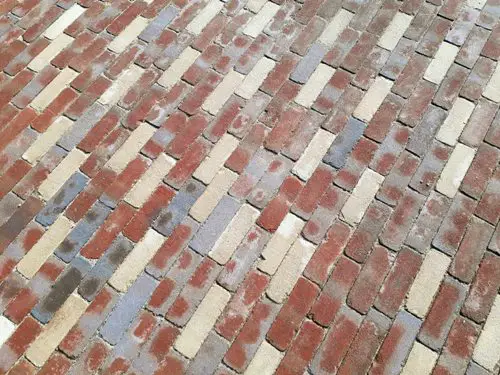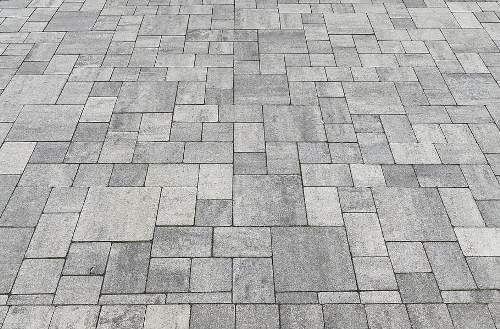We’re going to be talking about how to clean brick floors today. I know that cleaning can sometimes seem daunting, but it doesn’t have to be!
Brick is a very durable material, so if you follow these simple steps, your floor will stay looking good for years and years.
Table of Contents
A Step by Step Guide on How to Clean Brick Floors

With brick, there are two types of sealed and unsealed. The cleaning method may be different for each kind as their features are so distinguished from each other.
So, let’s learn how to clean the brick floors, based on each category:
#1. Sealed Brick Floors
Sweep and Vacuum The Dust
Let’s start by using a broom to sweep away the loose dirt on the floor, then take the vacuum cleaner for deeper cleaning. Make sure you choose the right option – “cleaning the hard floors” so that it can easily remove dust particles stuck in tiny spaces on your brick floors.
Choose A Cleaning Solution
After removing the bare dirt, you need to select the appropriate cleaning method.
The best is to use a mildly alkaline cleaning product because it can deep clean without causing any harm to your brick floors. For the best result, you’d better carefully read the instructions printed on the product packaging.
In case you run out of them, there are also three suggestions available to you:
- Borax is a strong alkali that requires dilution with a large amount of water. When using, you should mix two tablespoons of Borax with a gallon of water.
- Baking Soda is milder than Borax but still removes stubborn stains effectively. You can pour two tablespoons of baking soda into a gallon of water and stir them. That’s enough!
- Vinegar is a natural cleaner used for brightening, disinfecting, and neutralizing odors. With vinegar, you need to dilute half a cup of it to a gallon of water.
Wash The Floors

Now, soak your mop in the floor cleaner you’ve prepared and squeezed out as much water as you can. Then, mop your brick floor until it’s all clean.
Since the brick floor is quite rough, I advise you to use strong force to get the dirt out of those small crevices.
Here are some notes for you in this step:
- Don’t use rags or sponges because they’re not suitable for floors with such surfaces. For the most effective cleaning, choose a mop with microfiber strings.
- When you encounter more vital stains, a stiff nylon brush will be an ideal tool to remove them.
- During the cleaning process, regularly pay attention to your floor cleaning solution. Cleaning the floor with dirty water will adversely affect the cleaning effect. When the water starts to get dirty, pour it out and continue making a fresh batch.
Steam Cleaning
It’s time to get out the steam cleaner to disinfect your brick floors and reduce odors. Believe me; this machine can bring a better result than you expect!
Regarding the working principle, its steam will push the dirt from the small holes of the brick out. So all you have to do is turn on the switch and move the pipe to all corners of your rooms.
Remember to move it slowly to ensure the steam can reach everywhere on your brick floors. Just repeat the process until everything is perfect. That’s how we got a deep-cleaned floor!

Remove Difficult Stains
After you’ve finished those previous cleaning steps, let’s wait for the floor to dry completely. When you inspect it again, you will probably spot a few stubborn stains, which require you to apply a more robust method to clean.
You can easily remove these stubborn stains with a mixture of baking soda and dishwashing soap. My advice is to mix about four tablespoons of dish soap with half a cup of baking soda. Then, apply this mixture to the stain on your brick floor.
Ten to fifteen minutes is the ideal time for this mixture to weaken the adhesion of the dirt to the floor. Then I suggest using a brush and scrubbing hard. After removing the stains, you only have to rinse the brick floor with warm water.
If the stain is oil-related, you should try another way. Mix a cup of water with a quarter cup of bleach, then pour it over the stain. After half an hour of waiting, you can now take a towel to clean the stain. Finally, use fresh water to rinse the area again.
Clean The Grout
The last step is to clean the grout. Once the grout soaks into the spill (or solution), it will cause discoloration and make the floor look ugly.
So, how to clean grout for your interior brick floors effectively?
Well, I have three options to solve your problem. Consider the method that you feel is easiest to do for your brick floor.
- Using a steam cleaner
- Using a mixture of water paste and Baking Soda
- Using a grout cleaner
However, these methods do not always work for all types of brick floors. If that’s the case, you should consider removing the old grout and reinstalling the new one for your brick floors. That way, you will have your brick floor as new as the day you just floored it.

#2. Unsealed Brick Floors
Unsealed brick floors require different cleaning steps than sealed one. Overall, the process is shorter and doesn’t take too much effort to deal with it. Scroll down to see an in-depth guideline on cleaning the unsealed brick floors, and understand the difference between two types of floors:
Sweep The Floors
Similar to the sealed brick floor, an unsealed one also starts with removing all the dirt from the floor’s surface. Get a broom and sweep your floor as clean as possible. Try to clear carefully in all the nooks and crannies to ensure the big dirt is all clean.
If the floors appear broken pieces of brick, then sweep up all that dirt and debris, and use the dustpan to get them out of your house.
Scrub The Floors
Once the sweep is complete, it’s time for the most critical cleanup step. You can apply the same methods of the sealed floor to the unsealed one – commercial products, baking soda, vinegar, or Borax. Just pick the one you think is most appropriate!
Scrub the floor with the cleaning solution you mixed. My piece of advice for you is to avoid the grout area, as your detergent can cause discoloration.
Wash The Floors
Now, you have to rinse the entire floor with warm water. To make the job faster, you can use a spin mop. Then, cover with a microfiber cloth to speed up the drying process.
Remember to change the water immediately if it gets dirty. Dirty water will lead to water stains on the floor when the drying process is complete. Only when you fix this problem will the cleaning process be successful!
Our Final Thoughts
Brick floors are a great way to add character and warmth to your home. But brick is porous, which means it can get filthy over time if you don’t regularly maintain the surface of the floor.
We hope you enjoyed our step-by-step guide on how to clean brick floors so that they stay looking new for years!
Related Post:
- How To Clean Bird Poop Off Brick Properly
- Super Easy Steps On How To Clean Cork
- The Ultimate Guide on How to Clean Bird Poop off Concrete
- How To Clean Bird Poop Off Deck – All You Need To Know
